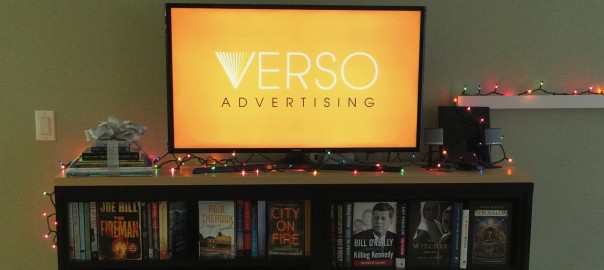While the book world bustles about Chicago during 2016 BEA, the world of advertising has been busy talking about the marketing funnel, YouTube best practices, marketing intelligently to smart women, and more.
THE MARKETING FUNNEL IS NOT DEAD
A while back we pointed to an opinion piece that argued that the marketing funnel is dead and has been replace instead by marketing pinball. In fairness, we’re now pointing to Sam Bridger’s opinion piece that argues that the funnel is very much alive. In the piece that inspired Sam Bridger, Mark Ritson argues that marketing pinball mistakes tactics for strategy:
“The error that Mr John makes is looking at the tactical resources that he uses to traverse the various steps in the buying process, rather than the journey itself. Clearly today’s consumer is availed with a whole set of resources and influences unimaginable a decade ago. But that is not the point of the sales funnel, which charts the consumer journey, not the tactical attempts of brands to influence it.”
While “marketing pinball” is a metaphor that continues to feel closer to our experience of today’s marketing environment, and we don’t think one metaphor is necessarily a refutation of the other—they’re both metaphors with the full range of accuracy and fuzziness that metaphors deliver—it’s worth heeding the arguments of a couple old pros.(via @FishFood)
#tactics #strategy #marketingfunnel #marketingpinball
DO WOMEN PREFER GENDER-NEUTRAL LANGUAGE IN MARKETING?
In a study on marketing to women, eMarketer reports that 74% of women would rather receive gender-neutral marketing messages. This was true across all age groups. But when it comes to “likes” and follows, younger women are more likely to engage than older women:
“Female users ages 18 to 29, however, were a bit more likely to follow brands on social media and sign up for email marketing newsletters compared to older female respondents.”
#women
HEARST TARGETS PRINT SUBSCRIBERS DIGITALLY
Print subscribers are some of the most engaged readers around, so we are excited by Hearst’s announcement that they can now target print subscribers digitally:
“When someone fills out a subscription form online, that data is loaded up into Hearst’s system and attributes like age, ethnicity and household income from third-party data are tacked on. Hearst can then target those readers across its online sites.”
The buy-in is too steep for book publishers right now, but we look for that minimum buy comes down.
#data #print
EMAIL EFFECTIVENESS
According to the Relevancy Group, US marketing executives believe that email alone drives the same amount of revenue as their social media, website and web display ad efforts combined.
#email #backtoschool
STILL TRYING TO SOLVE FOR CTR
Since the Dawn of Time (or at least the dawn of the first Web ad), human beings have been striving to find a decent alternative measurement to the justifiably beleaguered click-through rate. Now, a new group of digital publishers have banded together to explore the latest alternative: time-based sales. We wish them god-speed.
#deathtotheCTR #data
HEARST UPS THE POP-UPS ON SNAPCHAT
Hearst announces that they will be running more pop up events on Snapchat after their success around prom themed Discover posts. Snapchat is making a serious run for live event marketing against incumbant powers Twitter, Facebook and Instagram.
#snapchat #twitter
WHAT’S THE IDEAL LENGTH OF A YOUTUBE VIDEO?
While studies of TV ads show :15 spots more effective than :30s (and at half the cost!), some studies show that YouTube videos as long as three minutes are making a serious impression. YouTube’s take-away? “Go short or go long.”
#youtube #video
YOUTUBE MAKES THE CASE FOR ITSELF
And it’s a good one: YouTube reaches more 18-49 year-olds than any broadcast or cable TV network; 91% of YouTube impressions are viewable compared to the 54% industry average (also: this is buy definition since YouTube is sold on a cost per view basis); 8 of the top 10 most influential celebrities according to U.S. teens are YouTube stars; 100% growth in time spent watching YouTube on TV.
#youtube #video
YOUTUBE MAKES A CASE FOR EMPOWERING ADVERTISING
YouTube’s Susan Wojicki makes the case that ads that make women feel empowered make a significantly bigger impact for the advertiser:
“Women ages 18-34 are twice as likely to think highly of a brand that made an empowering ad.”
#video #women
SHEKNOWS PROMOTES ITS FEMINIST AUDIENCE
In the NewFronts, SheKnows makes a similar point to YouTube—if by empowerment you think of the word “feminism” (and we do). Adweek reports on the first Digital Content NewFronts presentation from Sheknows:
“SheKnows played up its research to back up a number of feminist-minded online classes and original videos. To help marketers first get a grip on its audience, the women’s media company shared data from 1,622 online participants who answered questions about how they define feminism. Overall, 46 percent of women identified as a feminist. Another 32 percent weren’t sure or said it depends and 22 percent of women don’t consider themselves a feminist.”
#politics #feminism #targeting
NEWSFRONTS PUSH INTEGRATED CONTENT
A recent article in the New York Times has good insight into the recent push for integrated content. While the examples in this piece are too rich for any book publishing budgets, it’s an indicator of an overall trend we’re watching closely and taking advantage of wherever budgets allow.
#native #video
TOMS TAPS VR
The “buy one, give one” message has always been an integral part of Toms sales strategy; so it’s a smart move to use the immersive storytelling experience of VR to tell the stories of the people who receive the donated shoes.
#sales #compassion #vr










